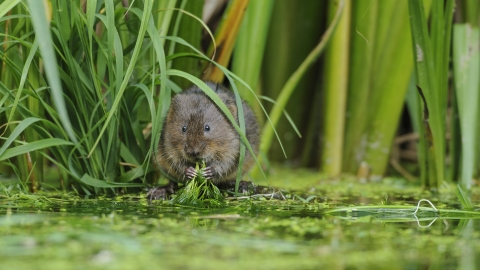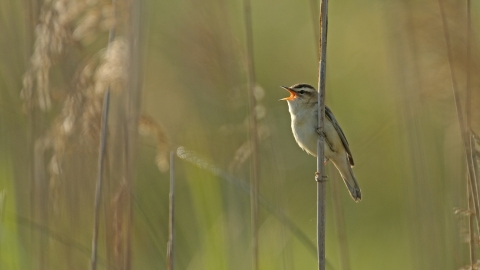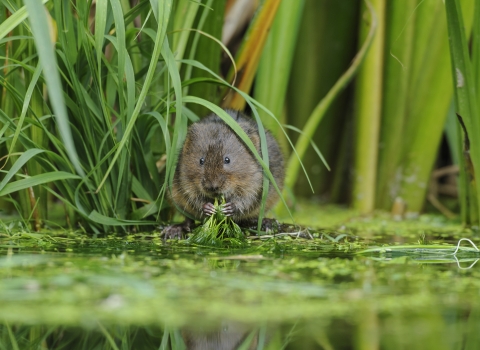Please note: Limited parking is available on a small grass verge opposite the reserve and you will need to cross a busy road to access the site. The gate entrance has a steeping path down into the reserve.

Terry Whittaker / 2020 Vision

Chris Gomersall
Rushy Mead Nature Reserve
Know before you go
Dogs
When to visit
Opening times
Accessible at all timesBest time to visit
April to JulyAbout the reserve
Listen to beautiful Sedge and Reed warblers sheltering in the dense reedbeds during the summer, whilst secretive Snipe and Water Rail are found silently walk along the edges over winter. Lined with bright Marsh Marigold flowers, the ditches have allowed Water Voles to establish in good numbers, and a number of Dragonflies and water beetles are seen here in the summer months.
The northern end of the reserve has developed into a mature woodland that is a particularly good area for birds, including sightings of the rare Willow Tit. There are also areas of chalky grassland that support a variety of wildflowers including Bee Orchids and Wild Carrot.
Species
Habitat
Contact us
Environmental designation

Terry Whittaker / 2020 Vision
Did you know?
The name Rushy Mead comes from an old tithe map showing the site as riverside meadows
